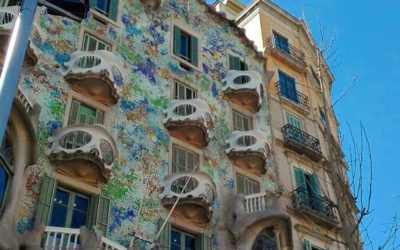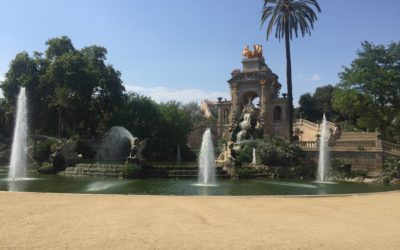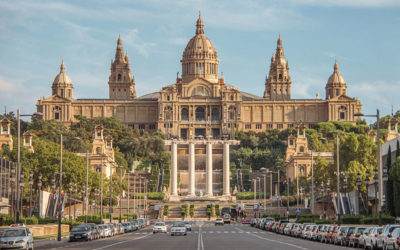The city of Barcelona presents intense heat waves alongside unpredictable chaotic energy. This document presents information about the most peaceful areas within Barcelona so visitors can escape street life. Public spaces in Barcelona maintain an untypical European charm since their parks introduce one-of-a-kind and lovely attractions throughout their grounds.
Gaudi’s Parc Guell showcasing Barcelona’s iconic visuals ranks as Barcelona’s most well-known park. The urban park features communications consisting of unique tiled designs that adorn its city-view platforms along with the popular little lizard statues which replicate into mass-produced tourist merchandise found everywhere. These mosaics and statues entice numerous casual city photographers using modern portable equipment. The exceptional statues combined with arches and walkways present visual marvels that emanate from a Spanish visionary responsible for defining contemporary Barcelona into its present form. Visitors must experience Parc Guell at some point but they’ll need to endure heavy crowds during popular visiting periods to enjoy its panoramic city views.
Located near the Collserolla Mountains, this peaceful site named Parc Del Laberint rests far from Barcelona’s central reaches. The highlight of these gardens is the labyrinth-shaped hedgerow maze which earned the park region its name. The city’s earliest decorative gardens appeared within its wooded surroundings many centuries ago and this makes Parc del Laberint one of Barcelona’s most original and romantic nature parks.
Near to Arc De Triomf plus El Born’s historical district lies the tranquil tree-lined Parc de la Cuitadella. A boating lake and Romanesque statue-decked waterfall rise above palm trees at this attraction. Inside this area you’ll spot a genuine woolly mammoth. Barcelona Zoo occupies the park’s lower section with the Parliamentary building of Catalonia keeping watch from its eastern border. When summer arrives the park becomes bustling with performers mixing with people who blow bubbles while shady vendors sell plastic-cupped ‘mojitos’. Cuitadella stands out as the liveliest and most characteristic park that Barcelona keeps.
Upon walking above the tranquil pool through the Jardi Botanic wooden pathway you realize you are in a special environment. The gardens host 1,500 plant species representing places worldwide that share Mediterranean climatic conditions. This addition to Barcelona’s collection of green spaces started operations in 1999. Located on Montjuic hill’s famous edge the park puts visitors in the ideal position to see magnificent views of Barcelona. The Jardi Botanic offers public use as well as having institutional objectives to protect biodiversity and operates the Institute of Botany as part of its operation.
The Joan Miro park presents an open spacious environment while radiating modern lightness because it positions itself near prestigious Placa Espanya. The park and its artificial waterways alongside abstract statues create a decidedly modern atmosphere in comparison to most other historical Barcelona green spaces while being surrounded by modern glass buildings.
Situated at one of Montjuic’s elevated locations, the Jardins de Laribal serves as an adjacent space to the Joan Miro Foundation. The gardens experience light tourism despite their proximity to a major tourist spot because their hidden position on a slope makes them difficult to discover and they are absent from common tour guides. The park features flowing waterfalls which display mosaic art and several sculptures scattered among tiny hedgerows. The gardens feature both shady covered walkways and leafy shaded tunnels which become essential shelters during hot summer weather.
The Rose Gardens within Parc de Cervantes i Roserar boast more than ten thousand roses that consist of hundreds of distinct species. An international rose competition runs annually in May for people worldwide who exhibit new rose varieties. Regardless of your rose appreciation level these parks stand as excellent places to explore. This area adopts a prime position near the Zona Universitària metro station at the highest point of the Diagonal thus earning popularity among students as a sunbathing hotspot. Snaking fences surround these gardens which make them seem unreachably separate from Barcelona’s city growth.




